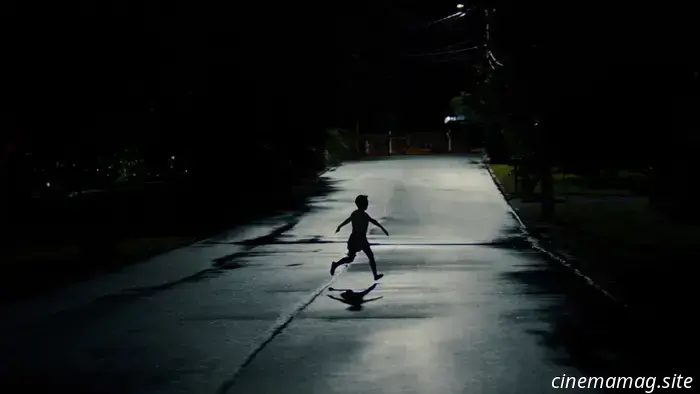
Football Enthusiasts, Radioactive Waste, and Elon Musk’s Phallic Aspirations for Mars at Visions du Réel 2025
One activity I enjoy during a film festival is going for a run. It’s essential to maintain the sense of being in a bubble at these events; once you enter, it's wise to stay immersed in its unique atmosphere to avoid losing sight of your purpose for being there. However, if you have a half-hour to spare, it’s pleasant to explore the surrounding area. It’s no surprise that many top festivals take place in locations favored by the affluent, which typically means low population densities and picturesque scenery—ideal for casual runners. For instance, if you jog a mile inland from Nyon, where the Visions du Réel documentary festival occurs each spring, you'll likely find yourself alone in the stunningly serene fields of the Swiss countryside. Conversely, if you head toward the lake, you’ll encounter the crystal-clear waters of Lake Geneva and a breathtaking view of the Alps, where even the majestic Mont Blanc might make an appearance on a clear day.
One morning, while running along the waterfront, I stumbled upon EUFA’s headquarters, the governing body for football in Europe, characterized by its sleek, modern design that stands out amid Switzerland’s charm. Though this organization is unrelated to Visions du Réel, football was distinctly noticeable this year. One of the festival's guests was Corneliu Porumboiu, an alumnus of New Romanian Cinema, known for directing two unconventional football documentaries: The Second Game and Infinite Football. Both films were screened, alongside another unique football documentary titled Ultras by Swedish filmmaker Ragnhild Ekner. Ultras is a global, aspirational essay on football fandom, taking the viewer to diverse locations like Argentina, Morocco, Indonesia, and Eastbourne in England, highlighting the fans often overlooked or scorned by the wealthy executives back at EUFA.
Ekner's film celebrates the joyful elements of attending football matches: the colors, the sounds, and the rare sense of community and togetherness they provide. Notably, it wisely omits the usual violent hooligans—who are becoming an increasingly marginalized part of the sport often sensationalized in documentaries—and instead focuses on the forces that have driven the elite levels of the game toward a homogenized experience, accumulating wealth while leaving the rest to struggle for their share. The few references to hooliganism in the film show supporters dressed in black, while an Italian voice-over describes their uniformity as "boring," likely the exact attention they deserve. Ultras advocates for the variety and diversity within these spaces, making a compelling case for their cultivation rather than their condemnation.
To Use a Mountain
Regarding spaces that could benefit from more nurturing, Casey Carter's intriguing documentary To Use a Mountain delves into the U.S. Department of Energy’s search for an appropriate site to dispose of the toxic waste generated from the Manhattan Project and subsequent nuclear tests. In 1982, six locations were under consideration, and Carter visits each in a film that reflects on administrative naiveté and insensitivity while also serving as a captivating geological travelogue. Each segment has a unique character, some more engaging than others, which makes it peculiar that Carter chooses to give each equal representation. Among the standout locations are Nevada, where Carter interacts with a charming former uranium miner and VW tour guide, and the protests occurring in both Texas and Yucca, with the latter providing a powerful conclusion to the film. Throughout, Carter merges current footage with archival clips, revealing familiar faces from today who continue to bravely advocate for their cause; all while employing some of the most captivating use of on-screen documents I've encountered. It’s worth seeking out.
Another film presented at this year’s Visions du Réel that complements Carter’s work (and fits into our theme of unruly projectiles) is Shifting Baselines, which examines the aftermath of rocket launches—specifically those intended to reach space. Directed by Quebec filmmaker Julien Elie, Baselines is not a documentary about Roger Federer’s backhand. Instead, Elie visits the SpaceX Base in Texas to observe Elon Musk’s outlandish visions through the lenses of his most passionate supporters. Captured in stunning, grainy black-and-white, the film showcases the sights from the fringes of the launch site, where Elie encounters a typical array of eccentrics while capturing awe-inspiring visuals reminiscent of those produced by the SpaceX channel, recently likened to Pravda by Marina Hyde. Additionally, the film diverges to question the purpose of the debris currently in orbit, with Elie interviewing a professor in Cambridge among others. Research indicates that around 65,000 active satellites are circling the Earth, a figure projected to surpass one million if ongoing projects proceed as planned. (The film notably does not address the efforts to address this issue, representing a minor oversight). While watching Blue Origin lift Katy Perry and her friends into the cosmos last week, I couldn't help but think of Elie and his crew for concluding their film too soon. Nonetheless, the film delivers its message with


Other articles
 The 7 Most Alluring Films Featuring the Amish
Here are the seven most alluring films featuring the Amish.
The 7 Most Alluring Films Featuring the Amish
Here are the seven most alluring films featuring the Amish.
-Blu-ray-Review.jpg) Sneakers (1992) - Blu-ray Assessment
Sneakers, 1992. Directed by Phil Alden Robinson. Featuring Robert Redford, Dan Aykroyd, Ben Kingsley, Mary McDonnell, River Phoenix, Sidney Poitier, and David Strathairn. SYNOPSIS: Sneakers is being released for the first time in 4K Ultra HD and is also available again on Blu-ray in a new edition that includes a fresh 4K scan of the film along with the same assortment of […]
Sneakers (1992) - Blu-ray Assessment
Sneakers, 1992. Directed by Phil Alden Robinson. Featuring Robert Redford, Dan Aykroyd, Ben Kingsley, Mary McDonnell, River Phoenix, Sidney Poitier, and David Strathairn. SYNOPSIS: Sneakers is being released for the first time in 4K Ultra HD and is also available again on Blu-ray in a new edition that includes a fresh 4K scan of the film along with the same assortment of […]
 Netflix adapts Kakegurui to live action with the release of a trailer for the manga-based series Bet.
Netflix has unveiled a poster and trailer for Bet, the forthcoming thriller series based on the popular manga Kakegurui by Homura Kawamoto and Toru Naomura. The series focuses on Yumeko (Miku Martineau), an enigmatic student on a hidden mission of vengeance, who enrolls in a prestigious private school where gambling dictates social hierarchy and showcases her abilities […]
Netflix adapts Kakegurui to live action with the release of a trailer for the manga-based series Bet.
Netflix has unveiled a poster and trailer for Bet, the forthcoming thriller series based on the popular manga Kakegurui by Homura Kawamoto and Toru Naomura. The series focuses on Yumeko (Miku Martineau), an enigmatic student on a hidden mission of vengeance, who enrolls in a prestigious private school where gambling dictates social hierarchy and showcases her abilities […]
 The Disappearance Starts in the Initial Teaser for Zach Cregger’s Weapons
Following his transition from comedy in The Whitest Kids U' Know to his horror debut Barbarian, Zach Cregger's upcoming project has been eagerly awaited and shrouded in secrecy. Starring Josh Brolin, Julia Garner, Alden Ehrenreich, Austin Abrams, Cary Christopher, alongside Benedict Wong and Amy Madigan, Weapons has taken the summer release date that was formerly held by Paul.
The Disappearance Starts in the Initial Teaser for Zach Cregger’s Weapons
Following his transition from comedy in The Whitest Kids U' Know to his horror debut Barbarian, Zach Cregger's upcoming project has been eagerly awaited and shrouded in secrecy. Starring Josh Brolin, Julia Garner, Alden Ehrenreich, Austin Abrams, Cary Christopher, alongside Benedict Wong and Amy Madigan, Weapons has taken the summer release date that was formerly held by Paul.
Football Enthusiasts, Radioactive Waste, and Elon Musk’s Phallic Aspirations for Mars at Visions du Réel 2025
One activity I enjoy during a film festival is going for a run. It's important to preserve the unique atmosphere of these events: once you're in, it's ideal to stay immersed in that distinct feeling, or you might lose sight of your original purpose for being there. However, if you happen to have a free thirty minutes or
